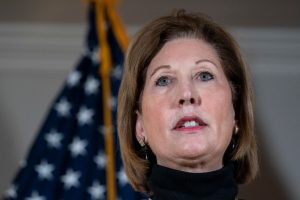The verdict of Germany’s voters is out. It is up to the party leaders to thrash out who will succeed Chancellor Angela Merkel after 16 years in office and with what political priorities.
Presently, the shape of Germany’s new Bundestag, or lower house of parliament, is clear. But there are majorities for three more or less plausible new coalition government. The Associated Press reported that it could take weeks or months to put a new administration in place. Here’s a look at how the process works.
What is the next step?
Ideally, the first-placed party leads German governments, but that is not always the case. It can end up in opposition if other parties form a coalition without it. This happened in 1976 and 1980, when then-Chancellor Helmut Schmidt stayed in office although his party finished second.
Also read: Germany polls: Angela Merkel’s party loses to Social Democrats after 16 years
There is no referee for the process of forming a new government, and no set time limit. Parties hold exploratory talks to determine who they have most common ground with, and one combination of parties then moves on to formal coalition talks.
When will Angela Merkel step down?
Merkel and her outgoing government will remain in office in a caretaker capacity until the Bundestag elects her successor.
The outgoing coalition holds the record for the longest time taken to form a government, after an attempt to form an alternative alliance collapsed. The Bundestag elected Merkel for her fourth term on March 14, 2018 — nearly six months after German voters had their say on Sept. 24, 2017.
Which parties are involved?
There are as many as four parties that are potential in the play to form the new government. The outcome will almost certainly be a coalition that has a majority of the seats in parliament. Germany has no tradition of minority governments, which are generally viewed as unstable and undesirable.
Also read: Olaf Scholz, German candidate likely to succeed Angela Merkel
The Social Democrats of outgoing finance minister and Vice Chancellor Olaf Scholz are the biggest party, but even they are far short of a majority with 206 of the 735 seats in parliament.
They want to build a coalition with the environmentalist Greens and the business-friendly Free Democrats. The Union bloc under Merkel’s would-be successor, Armin Laschet, could also form a government with those two parties.
The former is known in Germany as a “traffic light” coalition, after the parties’ colors of red, green and yellow; a Union-led alliance is labeled a “Jamaica” coalition because the party colors of black, green and yellow reflect that country’s flag. Both have been tried successfully in German state governments, but not at national level.
Agreeing on either may not be easy because the Greens in recent decades have tended to ally themselves with the Social Democrats, and the Free Democrats with the Union. The two parties have different priorities on fighting climate change, which the Greens want to put at the center of the new government’s agenda, and on how to handle the economy as it recovers from the pandemic.






